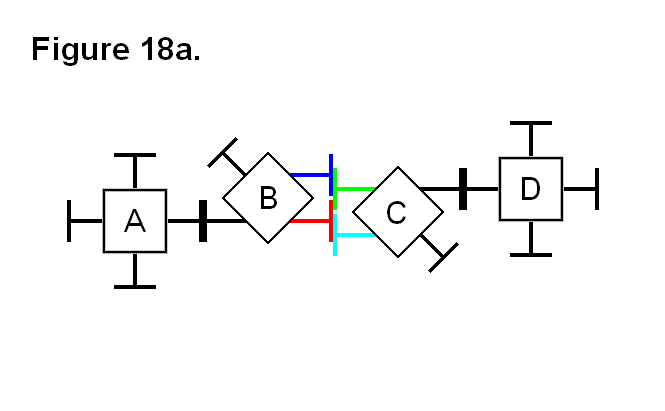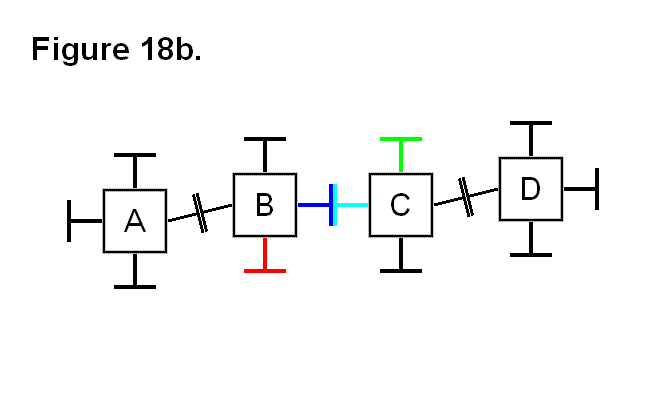CHAIN ARTICULATION BENEFIT
With the use of a method involving chained cells, it is unnecessary for any of the legs to be able to pivot more than 45°. Figure 18a shows a situation where cells A and B are joined to each other, and cells C and D are also joined to each other. Cells B and C are in contact with each other with the 2 pairs of legs from each cell shown in different colors. Since neither pair of connecting legs between cells are aligned, they cannot connect without pivoting the legs more than 45° in this position.

Without having to move from their positions, cells A and D can assist cells B and C with connecting together without the need for any of the the legs to be able to pivot more than 45°. Figure 18b shows how the cells can be arranged by pivoting the legs between the two pairs of cells to make this possible; the legs on the opposite sides of cells B and C are used to connect these cells together.

